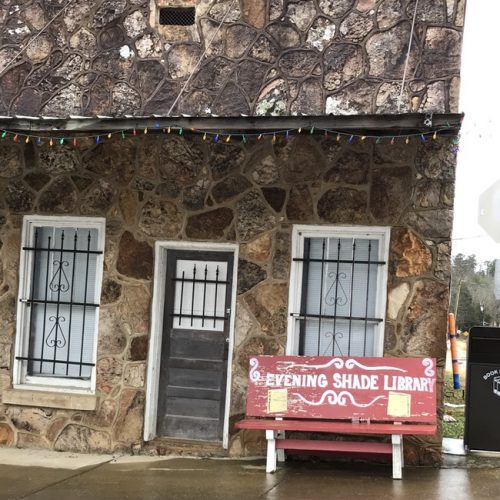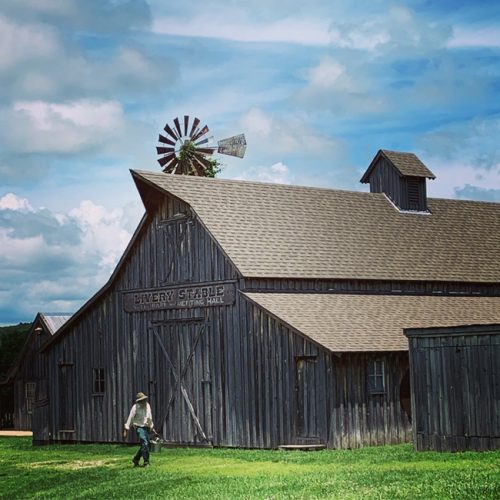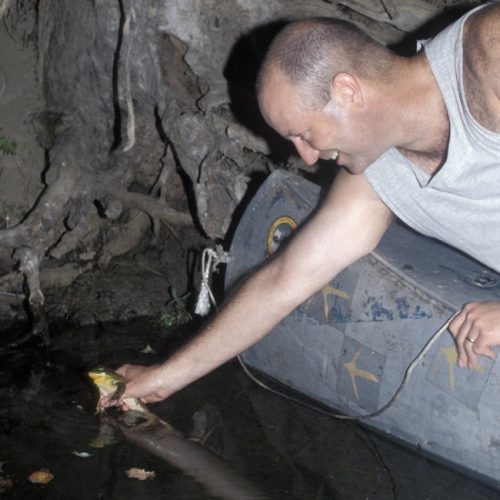On a recent hike at Greer Spring, in Oregon County, Missouri, we happened across a mill on a hill. It seemed an odd place to set a huge roller mill, and it looked as though it had been refurbished. We did the hike down to the spring, and drove back up the highway to the mill, parked and explored. It turns out we did exactly what those who have been instrumental in the restoration of Greer Mill wanted us to do, and … they aren’t finished yet.
The history of Greer Mill
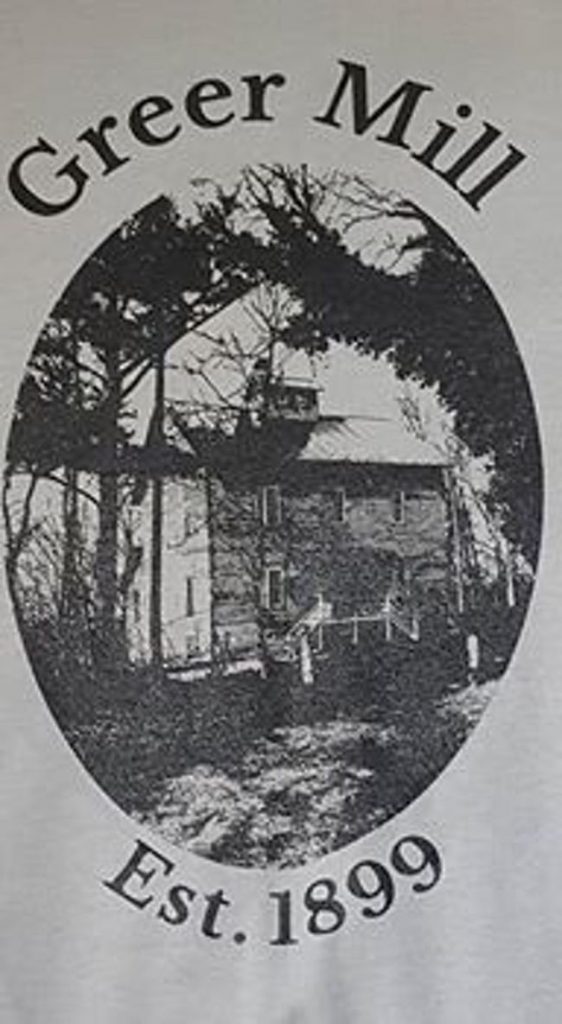
Built in August 1860 by Samuel W. Greer, a Confederate Army captain, the mill fell victim to bushwhackers who set fire to it. Greer rebuilt it after the Civil War, down by the spring branch of Greer Spring – a 1.25-mile section of water that rushes to join the Eleven Point River. Of note, Greer Spring is the 10thlargest spring in the US. Greer trained oxen to haul logs and grain on a circuitous hilly route – without a driver. In 1899, Greer installed a turbine waterwheel and erected a new, 3-story building uphill, on the present site. Before this move, there had been 2 mills on the spring branch. The new mill touted modern machinery that included pulleys and cables. Before this time, wheat came by wagonloads from railroad towns and Mississippi ports. If you know where Oregon County is located (This site sits south of Winona off Highway 60, and down Highway 19), you’ll know that it’s still somewhat isolated.
Greer sold half the interest of the mill in 1899 to George Mainprize, who operated the business until 1909. It changed hands a few times until it was sold to the Missouri Iron and Steel Corporation of St. Louis (Aug. 1919), who sold it to Louis E. Denning in April 1922. The U.S. Forest Service (USFS) purchased the property including the spring, and the mill site in 1993, with a grant from $500,000 from Anheuser Busch and $500,000 from Leo Drey (LAD Foundation), along with $3.2 million from the USFS. It sits within the boundaries of the Mark Twain Forest. Part of the deal included 20 years of recreational use for the Denning family.
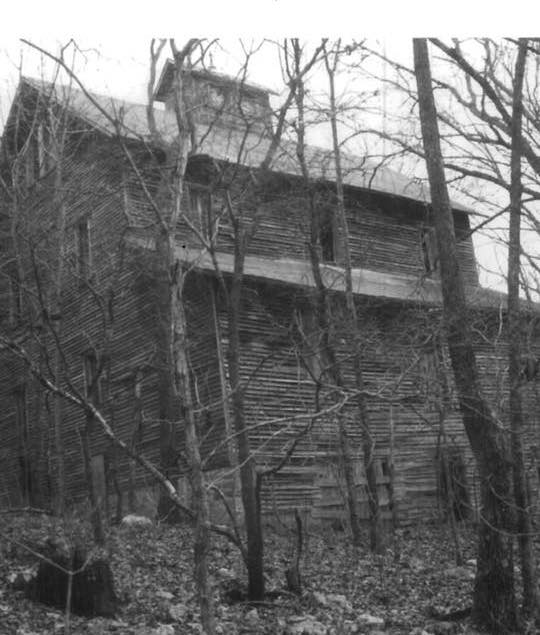
And, that’s where the restoration story starts. In 2013, at the end of the term of the Dennings’ use of the property, the mill became the focus of several interested residents of Oregon County. They formed the Friends of the Eleven Point River, a non-profit organization, for restoring the old mill. Brian Sloss, president of Friends of the Eleven Point, described the renovation process, which involved HistoriCorps. HistoriCorps is a service learning organization that partners with the U.S. Forest Service and Dept. of Agriculture to preserve historic sites on public lands. Between 2014 and 2015, in the summer, HistoriCorps completed the first phase restoration, along with help from Passport In Time and the Mark Twain National Forest. According to HistoriCorps, “The work included reconstruction of the structural members on the west elevation, rebuilding and repointing the foundation on the west elevation, residing the west elevation to a height of 8 inches above grade, stabilizing an interior bent, and minor repair of stairs and infill of window openings.” It replaced interior posts and timbers, cleaned the interior (which had been vandalized), excavated by hand to improve drainage on the east side of the mill and the also improved the drainage situation in the basement, replaced wall framing and sill plates.
The Friends of the Eleven Point organization also volunteered onsite, and hired local Amish workers. Sloss said they did the following tasks during that time: added a new roof, replaced the floor – which included working with a local flooring company to cut the flooring to the specific size and style of the times, hired Amish to build and install windows and shutters (again, according to the period) and replaced the siding.
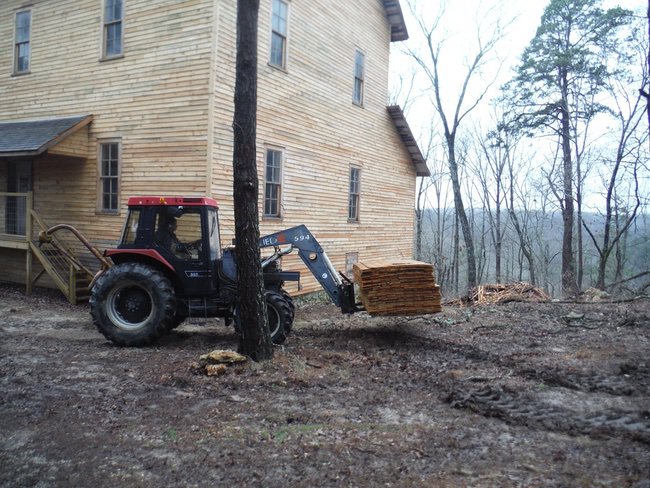
In 2016, HistoriCorps completed phase #3 of the process to restore Greer Mill, which included finishing the stabilization work and rebuilding the loading dock in the front.
Sloss says the building is only open for special occasions and that the Friends have held fundraisers with open houses. Sloss said the LAD Foundation has been helpful with funds, as well as other grant monies. The Friends also have hosted trivia nights, and held auctions, silent auctions and canoe races to raise funds for restoration. Donations are always welcome.
Parking remains dicey, and the location of the building on a hilltop off the highway is another problem that the Missouri Department of Transportation does not approve of for parking access. The Friends of the Eleven Point hope that a path may someday be cut from the parking lot of the spring access area up to the mill site.
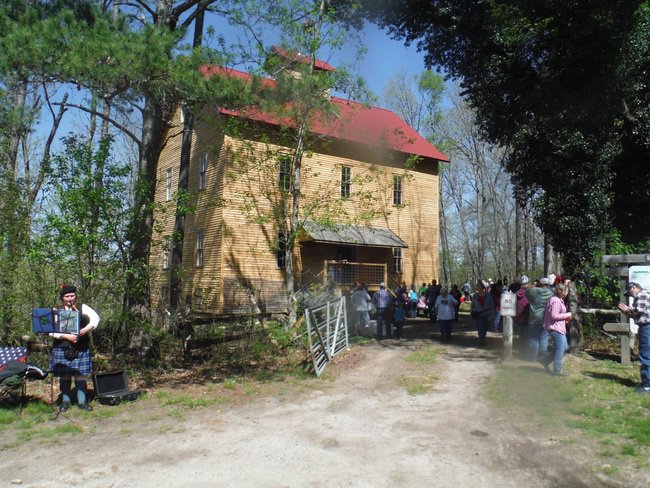
The old mill is worth a look, and a quick walk down the road will take you to old cabins once used by a family that enjoyed the lovely views of the spring branch of the Eleven Point River. The US Forest Service has closed the cabins, but hikers can still enjoy the area.
Across the street stands the old caretaker’s cottage, and Sloss said in the days before the Forest Service built the present parking lot, visitors would park near the cottage and a woman named Norma would make sure that they didn’t take matches, lighters or smokes. She would even check their pockets if she didn’t believe that they were telling the truth.
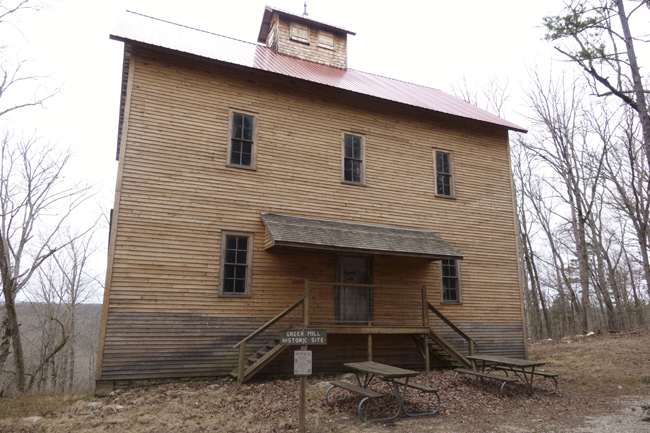
Visit Friends of the Eleven Point River to see more information about this lovely old mill in Missouri. Also, follow Friends of the Eleven Point River on Facebook, which is especially useful for events and updates.
Read about our trek to see Greer Spring.

